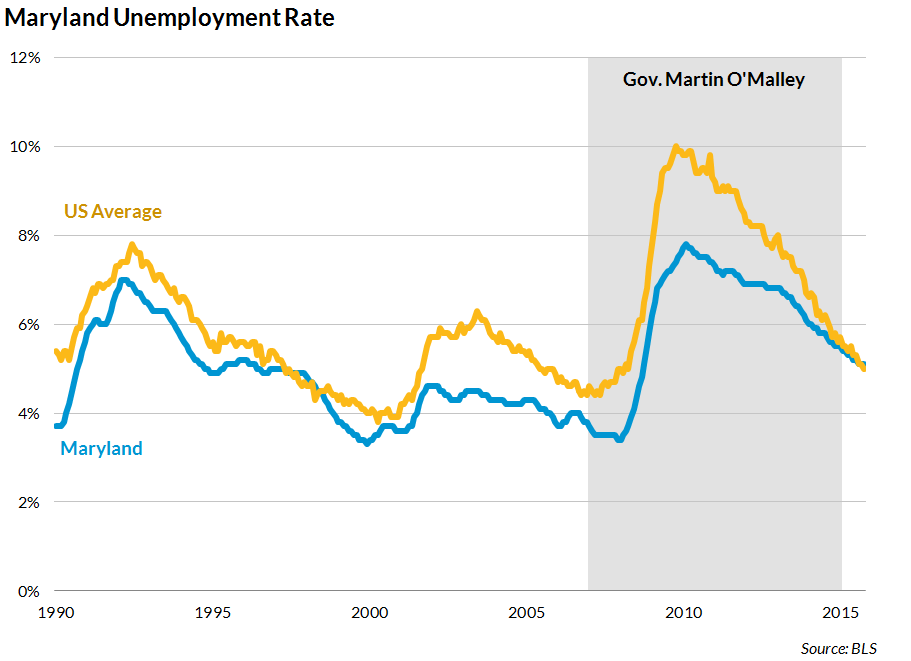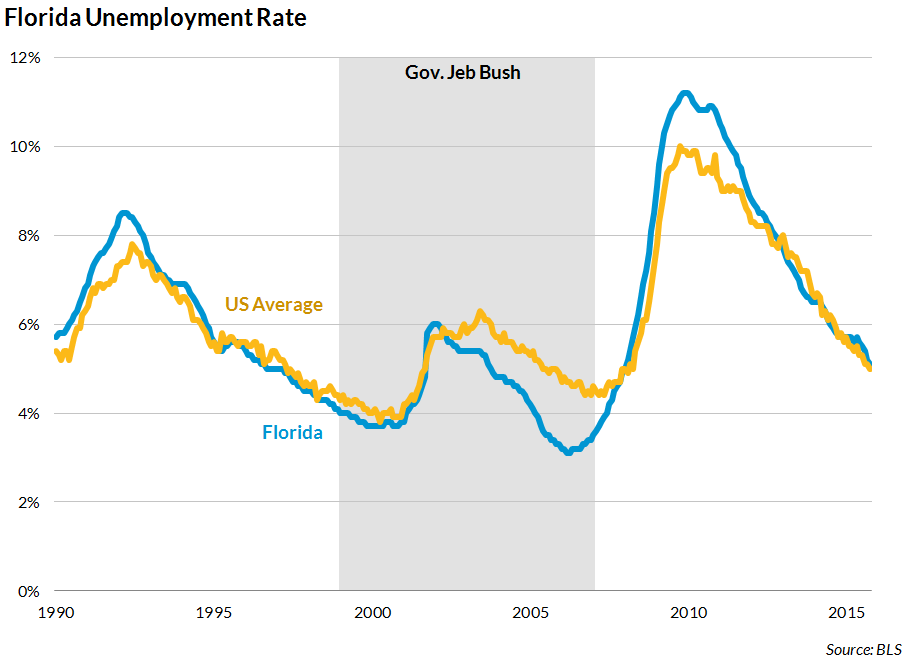The Urban Institute’s new interactive graphics of historical state economic data provide an important tool for analyzing the records of governors running for president: context. A state’s economy depends on a lot more than what the governor does.
As a result, you should always keep (at least) three things in mind when you assess a governor’s economic record:
- The national economy
- The state’s long-term trends
- The governor’s limited ability to affect a state’s economy relative to other economic factors
State unemployment rates offer a good example of why you should always zoom out when considering economic data.
Lesson #1: The New Jersey and Ohio unemployment rates have dropped considerably since Governor Chris Christie and Governor John Kasich took office (in 2010 and 2011, respectively). But so has the national unemployment rate. Both governors’ terms began after the Great Recession, when unemployment was high, and both states followed the nation as the economy improved and unemployment dropped. In fact, the unemployment rate in both states has roughly mirrored the national rate for decades.

Lesson #2: Maryland’s unemployment rate was below the national rate throughout former governor Martin O’Malley’s time in office—as much as 2.6 percentage points lower (in October 2009). But that was nothing new: the state’s rate was consistently under the national rate well before O’Malley took office.

Lesson #3: Former governor Jeb Bush presided over the lowest unemployment rate (3.1 percent) in Florida’s history during March and April 2006. And for most of his second term, Florida’s unemployment rate was at least 1 percentage point below the national rate. But a year after Bush left office, Florida’s rate equaled the national rate, and a year after that it was 1 percentage point above it.
The big changes in unemployment were consequences of the national housing boom and bust, which affected Florida more than most states. In fact, Florida’s dip below and spike above the national unemployment rate closely mirrors its house price rise and crash during the same period.

The takeaway from these three lessons is not that voters should ignore the economic records of governors. But voters should be leery of overhyped claims of success (or failure). Better yet, voters should look into something governors actually can control: policy decisions.
This is one in a series of posts from the Urban Institute’s State and Local Finance Initiative examining the records of current and former governors running for president.
Tune in and subscribe today.
The Urban Institute podcast, Evidence in Action, inspires changemakers to lead with evidence and act with equity. Cohosted by Urban President Sarah Rosen Wartell and Executive Vice President Kimberlyn Leary, every episode features in-depth discussions with experts and leaders on topics ranging from how to advance equity, to designing innovative solutions that achieve community impact, to what it means to practice evidence-based leadership.